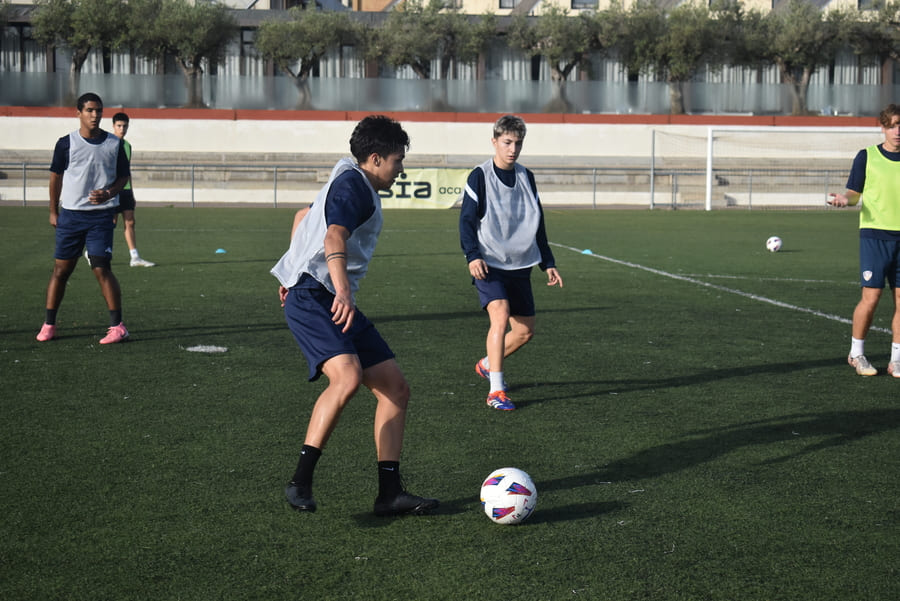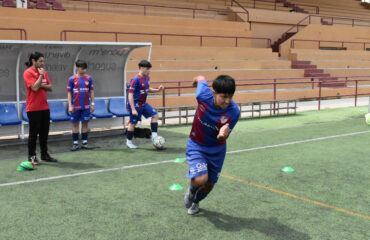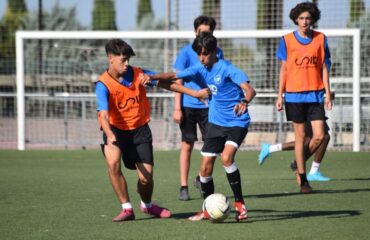The counterattack has become one of the most lethal weapons in modern football. In an era dominated by high pressing and possession play, being able to turn a recovery into a goal-scoring opportunity within seconds makes the difference between winning and losing. At SIA Academy, we understand the counterattack not just as a quick action, but as a game philosophy that requires precision, tactical reading, and collective synchronization.
Table of contents
The essence of the counterattack
The counterattack is the art of exploiting the spaces left by the opponent when they push forward. It’s a transition that combines intelligence, speed, and coordination. At SIA Academy, we work on this concept from the earliest stages because we believe modern football demands mastery of every phase of the game, and the offensive transition is one of the most decisive.
As Alain, one of our coaches at SIA Academy, says: “a good counterattack is not born by chance; it comes from training. Players must learn to read when and how to accelerate the game.”
Our goal is for each footballer to recognize the exact moment when regaining possession becomes an opportunity. For that, we train immediate reaction, peripheral vision, and accuracy on the first pass — the spark that ignites every fast attack.
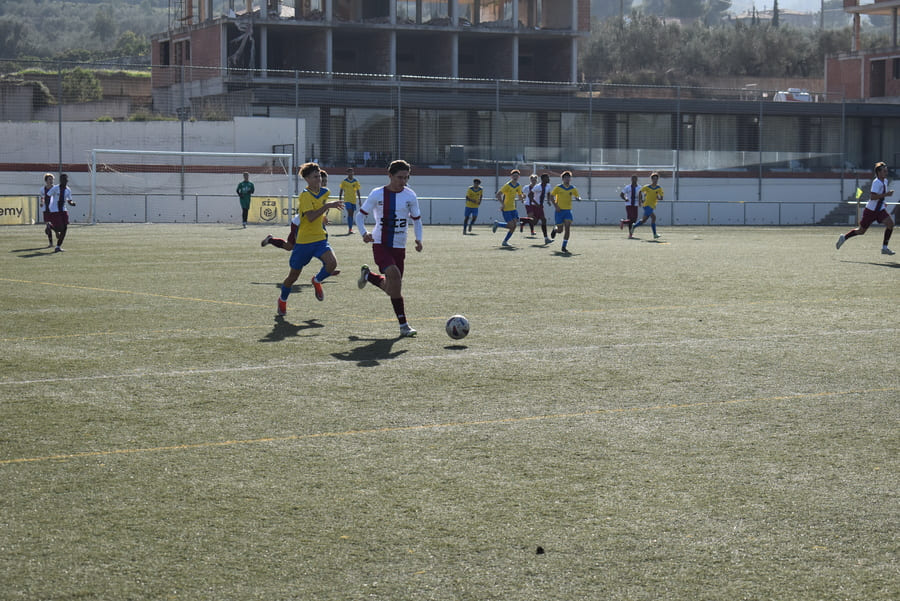
Basic principles to optimize it
An effective counterattack depends on decision quality and technical execution. From our experience at SIA Academy, we teach that every offensive transition must respect five key principles:
- Recover with intention: it’s not enough to win the ball; it must be recovered while facing open space. Recovery should always be the first step of the attacking action.
- Vertical first pass: the ball must advance as quickly as possible. The first touch determines whether the counterattack will be dangerous or fade away.
- Coordinated support: nearby players must react instantly. Every movement counts to create numerical superiority.
- Quick decision-making: within three seconds, players must decide whether to drive, pass, or finish.
- Smart finishing: a fast attack doesn’t always end in a shot; sometimes maintaining possession in the final third is also a tactical success.
Specific training for the transitions
At SIA Academy, we train the counterattack through progressive exercises that replicate real match situations. We start with 3v2 or 4v3 transitions, later adding opponent pressure and decision-making under stress.
Alain explains: “when we train the offensive transition, we don’t just seek speed. We want players to think quickly, choose the most effective pass, and stay calm in the final meters.”
We also use GPS tracking and video analysis to study player movements in each phase of the counterattack. This allows us to correct positioning, improve runs, and perfect synchronization between lines.
The role of defense in initiating the counterattack
A common mistake is thinking that the counterattack begins with the forwards. In reality, it starts in defense. Center-backs and defensive midfielders must anticipate and choose the right moment to recover. At SIA Academy, we train defensive reading so our players recognize the ideal instant to intercept and launch the quick outlet.
A pass from a center-back or holding midfielder to an attacking midfielder or winger can be the perfect trigger. If that pass breaks a line of pressure, the team gains vital meters and seconds. That’s why a clean and precise outlet is key to optimizing the offensive transition.
The importance of space and speed
Space is the fuel of the counterattack. At SIA Academy, we insist that our players understand the relationship between speed and available space. If the opponent leaves open areas, we must exploit them intelligently. It’s not just about running — it’s about running smart.
We use exercises with time and space restrictions to improve decision-making under pressure. A fast attack executed in 10 seconds can be more effective than two minutes of possession if done with precision and coordination.
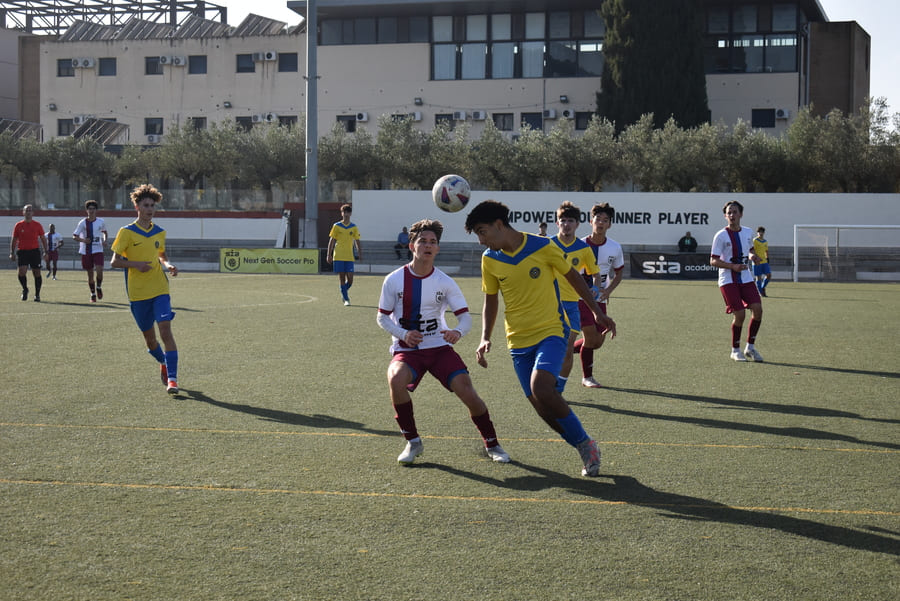
The counterattack and mindset
The counterattack is not only trained physically but also mentally. Staying calm and choosing the best option in fractions of a second requires concentration and confidence. At SIA Academy, we treat competitive mentality as an essential part of the training process.
Alain points out: “a mentally prepared player never hesitates. He knows when to go, when to pause, and when to decide the outcome of the play.”
That’s why we combine tactical drills with mental exercises that foster cognitive speed and resilience under pressure.
Examples and practical application
During training, we recreate real scenarios: recoveries in our own half, transitions after an opponent’s corner, or moments following high pressure. This way, players learn to identify patterns and automate the counterattack from different areas of the pitch.
We also analyze matches of teams that excel in modern transition, like Real Madrid or Liverpool, so our players see how theory turns into practice. This analytical observation reinforces tactical understanding and team cohesion.
The counterattack as identity
At SIA Academy, we see the counterattack as part of our identity. It represents speed, intelligence, and determination. It’s not just about running forward but doing so with purpose.
As Alain summarizes: “the best counterattack is not the fastest one — it’s the one that ends with the best decision.”
The modern counterattack demands precision, teamwork, and tactical awareness, and we train it with the same passion with which we play it. We believe mastering the offensive transition is not a matter of luck but of training, analysis, and a winning mentality.



